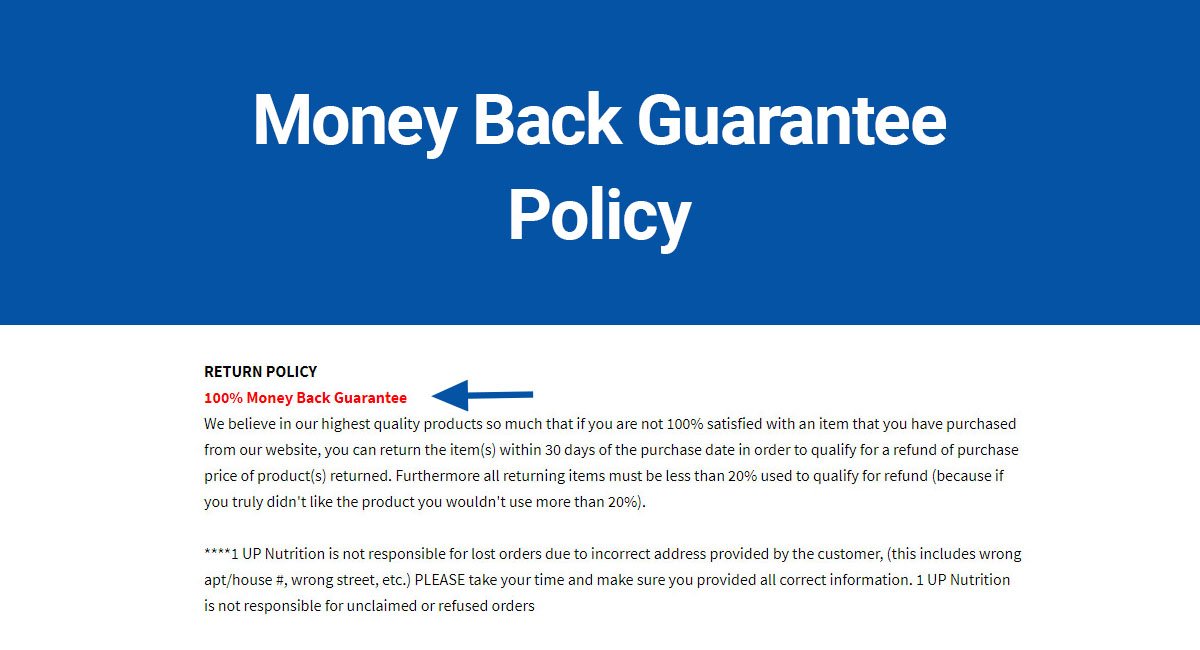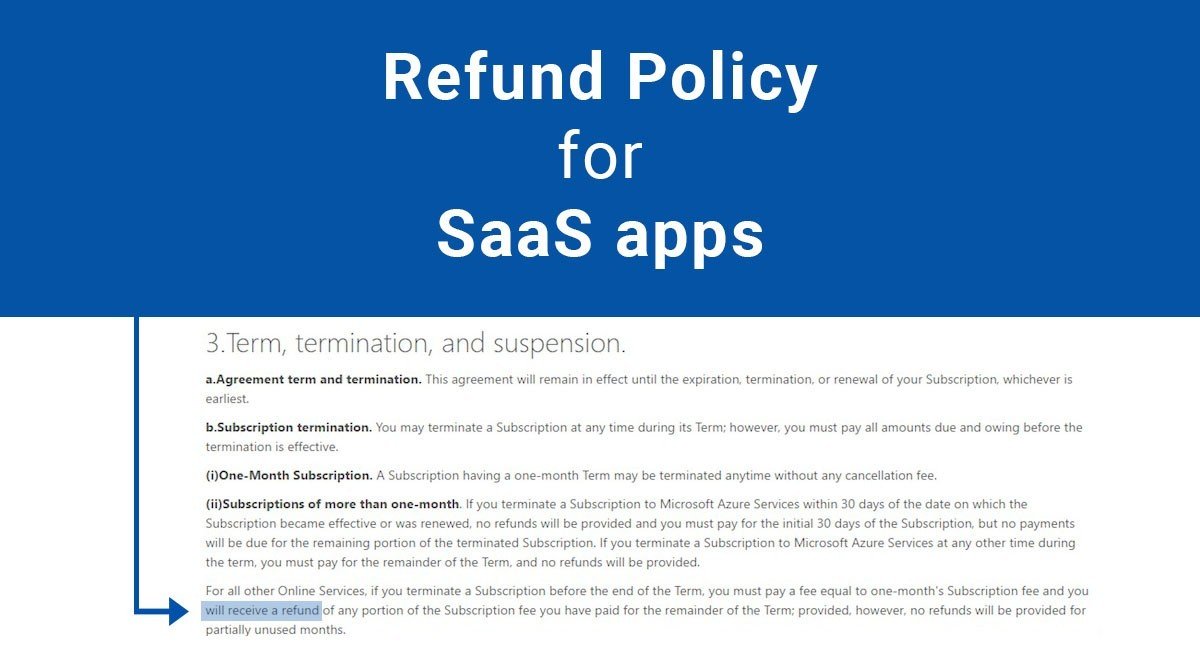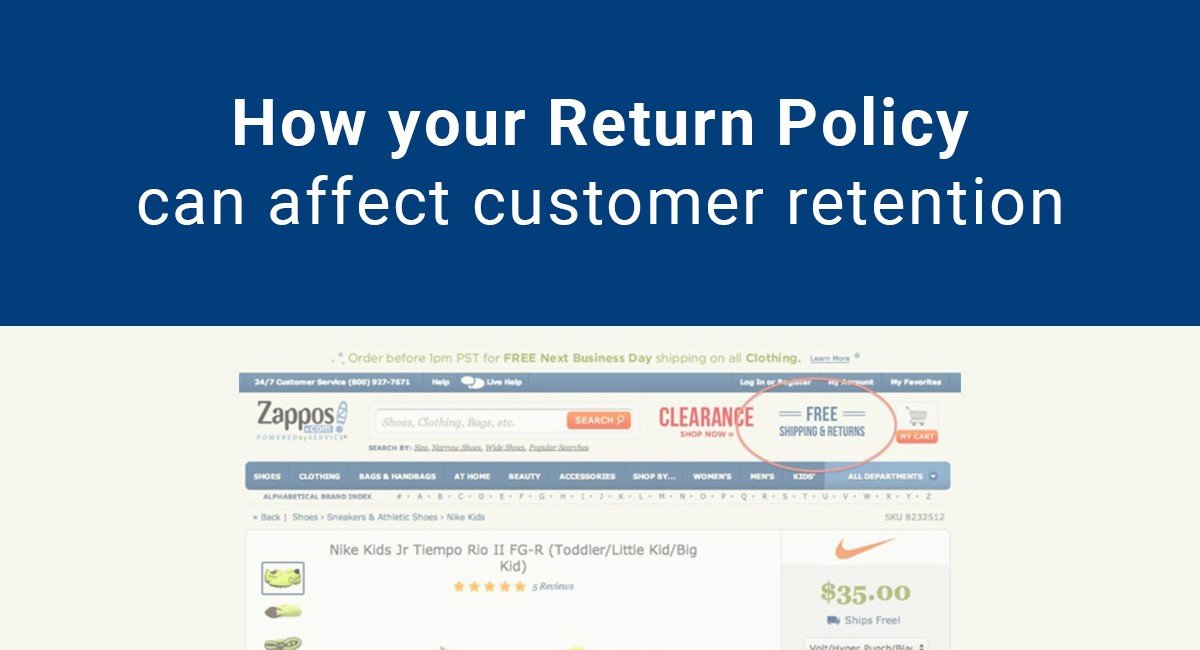To shoppers, having a money back guarantee shows that you have confidence in your product. While it acts mainly as a sales enhancer, many companies and web developers are under the impression that having one is a legal requirement.
There are several reasons to include a money back guarantee but none of them are because it's required by law.
Here is what you need to know about them so you can decide whether you want to include one your website.
Are you legally required to have a "Money Back Guarantee?"

The assumption that having a money back guarantee is required on websites arises out of current consumer protection directives. Online retailers and bricks and mortar stores must clearly state their return and refund policies in most parts of the world. If they do not allow returns or issue refunds, that must be obvious to consumers so they can make an informed purchase decision.
However, in reality, no retailer is required to accept returns or issue refunds. They are only required to make their policies clear. You will not face penalties if you fail to post a money back guarantee on your website or in your physical store - Only if you post nothing about your policies.
While there are no laws requiring this, the guarantee is an effective sales tool. It can attract customers by showing your faith in your own product or service.
This can be especially important if you are a new store to the online retail market. Customers are less likely to take a risk on your product unless they have some type of guarantee. A money back guarantee frequently fulfills this need.
However, it will not do its job unless consumers can find it. Fortunately, you have several options for making it conspicuous.
Placement of the Money Back Guarantee

Money back guarantees are typically found with other legal agreements (as part of Terms and Conditions, for example), or they are located in strategic places throughout a website. They may also appear with the Return and Refund Policy.
You have many choices. Here are some examples of how other companies have presented their guarantees.
Websites
One of the better ideas is to include a link to your money back guarantee with other important links in the footer of your website.
This is how Nature Made displays its guarantee:

Other retailers are not as upfront. FedEX has a Money Back Guarantee but a user has to search to find it.
To access this guarantee, a user must start with the "Support" tab and consult the Service Guide:
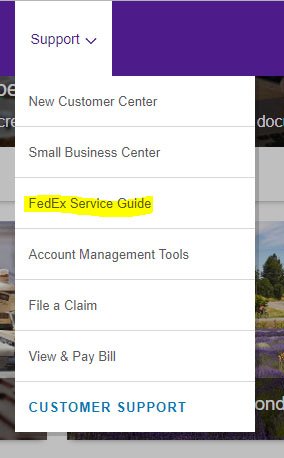
Once there, the user must know to look under "More Resources" to find the money back guarantee:
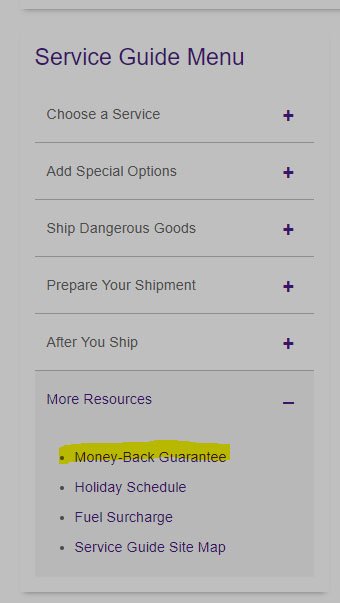
Ebay stores its guarantee in its Resolution Center which users can link to from the footer:

Once there, the Money Back Guarantee is in a Help FAQ in the right margin:

Most money back guarantees are often not general but linked to specific products and services. This is because many established companies may want to place a guarantee on a new product or service but not make the same claim for other products.
Digital Products
One option for showing your money back guarantee for digital products is during the sign-up process.
AWAI keeps its guarantee right near the enrollment button for its classes:
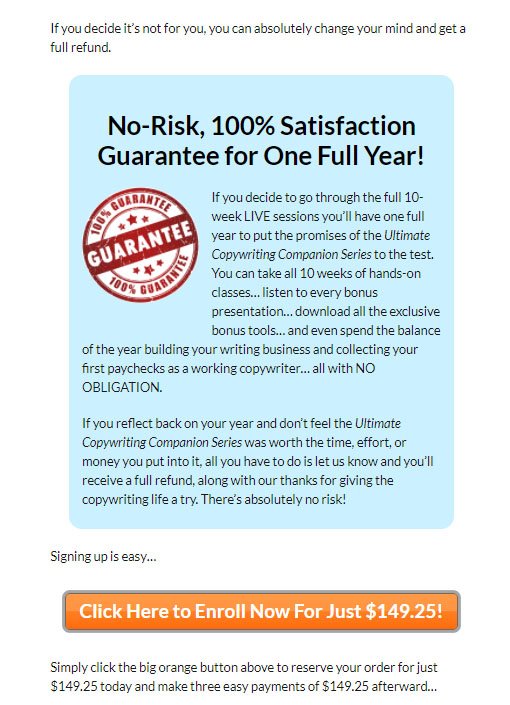
These examples show that some companies are more straightforward about posting their money back guarantees than others. FedEx and eBay have more complex policies that will be discussed later in this article. Those policies require effort to find them. The other two examples (Nature Made and AWAI) exist mainly to help drive sales, which is why you see them in places that are easier to find.
Return/Refund Policy
Many retailers also include a money back guarantee with their Return/Refund Policy. This is often a good approach because customers may look there first before making a purchase decision.
1 UP Nutrition indicates its money back guarantee in red letters to help it stand out. It then continues with its standard Return Policy:
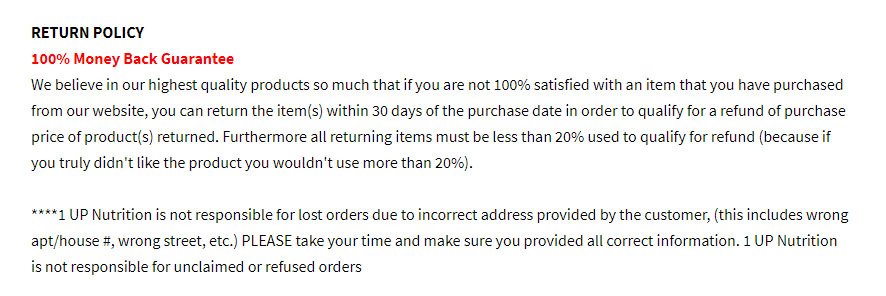
Nutrisystem, a weight loss program, has a very visible money Back Guarantee. It indicates a time limit and also explains the return policy:
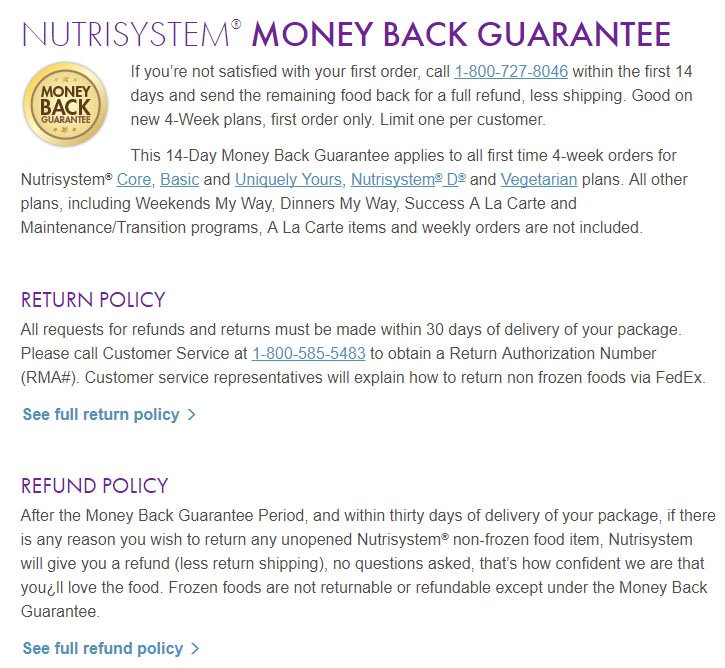
You'll find this very visible approach more commonly in the health industry, including weight loss products and supplement sales.
However, it could work well for other products and industries. If you are introducing a new line of clothing or cosmetics, for example, it will take a little more effort to attract loyal customers. Offering a money back guarantee could be the push shoppers need to purchase from you.
How to draft a Money Back Guarantee

Money back guarantees are usually short statements that are often accompanied with colored text and graphics. All this helps to make them more noticeable so they can drive sales.
As mentioned, FedEx does not make its Money Back Guarantee easy to find. However, as a well-established business with a good reputation, it is likely consumers will only seek that if there is a serious and rare problem.
So, once a user goes through all the steps, they will find a simple money back guarantee that also contains a link to the FedEx Service Guide. From there, they can start the process to secure a refund:
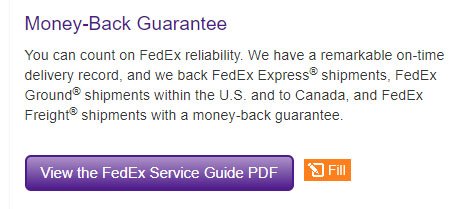
Digital services are tricky when it comes to Return/Refund Policies and money back guarantees because of the nature of the product. However, return and refund laws in the EU and UK make refunds mandatory, even for digital products. A money back guarantee can serve as a compliance practice to make it obvious that you issue refunds willingly.
Just Host offers hosting services and a money back guarantee if cancellation is requested within 30 days. This goes beyond the 14-day minimum for allowing refunds in the EU and Just Host clearly explains the amounts refunded in detail:

Nature Made is an online retail establishment for supplements. Its guarantee is visible and easy to read while also containing a form for requesting the refund.
This is likely one of the more consumer-friendly examples you will find:
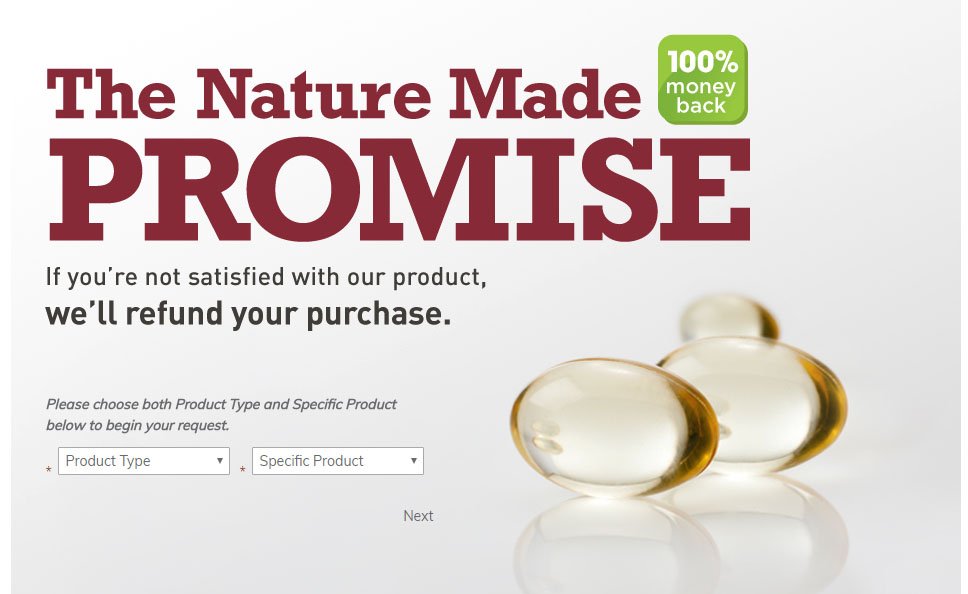
AWAI highlights its guarantee in blue and while it calls this a Satisfaction Guarantee, it still offers a full refund:
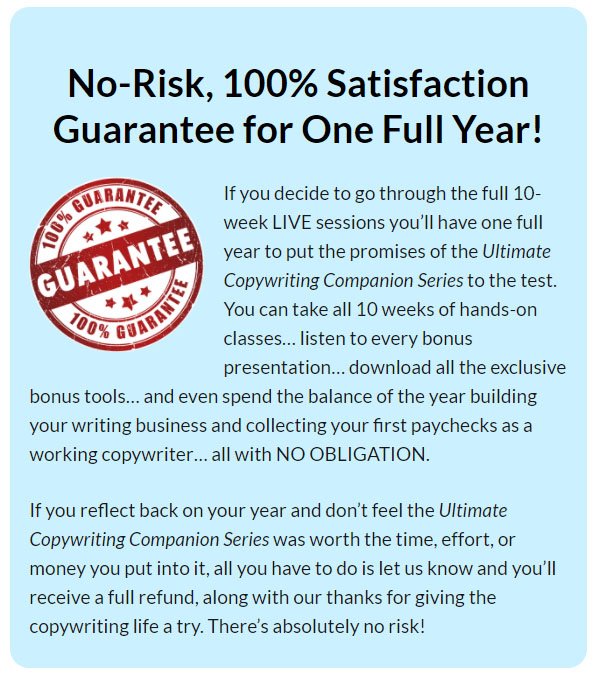
EBay is a more complicated example since it's an auction platform for other retailers and private parties. While it is not responsible for any shortcomings in products and services, it still offers a money back guarantee.
However, it comes with rules in order to assure users exercise this policy in good faith. Rather than a simple guarantee, there is a policy attached to this which explains the requirements and processes for receiving a refund from eBay:
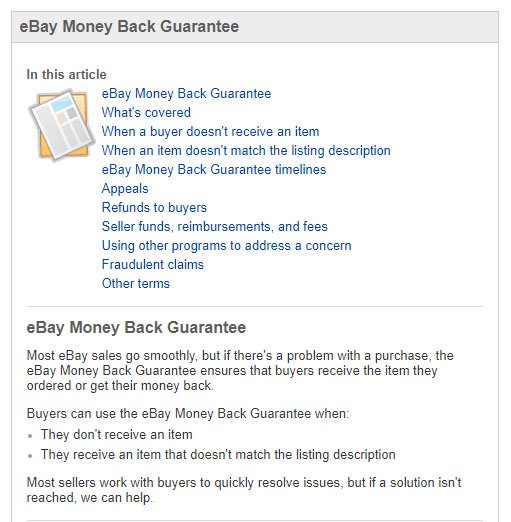
Is a money back guarantee appropriate for your business?

Since this guarantee is not required by law, you have a choice on whether or not you include one on your website. In most cases, it will likely help rather than hurt to have one.
However, not all companies feel comfortable making this offer, and a cost-benefit analysis becomes necessary.
Here are some factors to consider when deciding whether to include a money back guarantee:
- Consumer risk - If your product or service is new, a money back guarantee offers customers reassurance to take a chance. Many new products can benefit from a money back guarantee since consumers are more likely to buy if you can show faith in your product.
- Consumer expectations - When consumers invest in a health or fitness product or sign up for a class that promises them strategies to make a blog profitable, they likely have high expectations. If they perceive the product as having failed them, you are vulnerable to legal liability. Offering a money back guarantee often calms these litigious tendencies and leaves you less vulnerable.
- You already have a Return/Refund Policy - If you have a Return/Refund Policy, you might as well have a money back guarantee. This makes your willingness to issue refunds much more visible and reassures consumers. Just as with your Return/Refund Policy, you may put time limits on the guarantee. Just be sure any time limits comply with the laws of your jurisdiction.
A money back guarantee is usually a matter of web design over legal knowledge. While the law does not require one, it can prove to be a useful tool in securing consumer trust and growing your product and brand. Make it visible and attractive and it is likely your sales will increase as a result.

Comprehensive compliance starts with a Privacy Policy.
Comply with the law with our agreements, policies, and consent banners. Everything is included.
